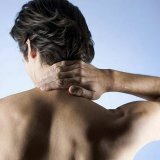Migraine with aura: what is it, symptoms, treatment
Migraine can be classified as one of the most common neurological diseases in the human population. This pathology is often combined with other pathological conditions, for example, epilepsy, rheumatic heart disease, Raynaud's disease or syndrome, systemic hypotension and many others.
What is migraine with aura? Migraine is an independent nosological disease characterized by bouts of prolonged headache, accompanied by visual, motor and sensory impairments. Often, attacks are preceded by a so-called "aura" or a harbinger of the condition. It is also worth noting that migraine with aura is cephalalgiathat does not fit into other symptoms and syndromes.
Content
- Epidemiology.
- Causes of occurrence.
- Symptoms and manifestations of classic migraine and migraine with aura.
- Diagnostics.
- What diseases should be used for differential diagnosis of migraine?
- Which doctors to contact
- Migraine treatment.
- Preventive treatment
- Forecast and ability to work.
- Related Videos
Epidemiology.
The prevalence of migraine in Europe and the United States is quite high: this pathology occurs in more than 17% of women and almost 9% of men. This calculation was made due to active and passive detection of the pathological condition. It is worth to reverse the trend of increasing prevalence of pathology among participants in military conflicts in Vietnam, Afghanistan, Iraq and other "hot spots". In China, the frequency of occurrence is the lowest in the world.
There is a direct dependence on the race of a person for the spread of migraines. For example, in people of Ottoman-Caucasian origin, the pathological condition is observed in more than 20% of cases, in the Negroid race - about 17%, in the inhabitants of Asia and America - up to 10%. The peak incidence occurs at a young age (from 23 to 52 years), and in women in menopause there is a second wave of prevalence. However, migraines are common in pediatric practice and in the elderly. Every year, the incidence of migraine increases by 12-36% compared to the baseline indicators of previous years.
Causes of occurrence.
To date, there is no exact etiological factor for the onset of the disease. A group of conditions is distinguished that provoke the onset of migraine attacks with an aura. These include:
- sharp drops in barometric indicators of atmospheric air;
- chronic stress;
- estrogen background in women during the formation of the menstrual cycle or menopause;
- eating foods that are rich in tyramine;
- conditions of stay in places with increased background noise or excessive artificial lighting;
- avoiding physical activity;
- hereditary transmission and predisposition.
There are three main pathogenetic theories that characterize the mechanism of the onset of migraine symptoms. All of them are interconnected with each other along a reflex chain. The pathophysiological reactions in a pathological condition, regardless of the cause of its occurrence, are based on the main changes in the vessels: spasm and dilatation.
Read also:Concussion
An attack of the disease is characterized by impaired cerebral circulation as a result of the expansion of the vessels of the brain. During the period when the "aura" appears, the vessels undergo the opposite state - constriction. Such sharp opposite mechanisms provoke a decrease in the concentration of serotonin in the patient's blood plasma.
- Predisposition and genetically determined programming. It is known that if a mother has migraine symptoms of the disease, the likelihood of the manifestation of the disease in children increases by 78%. In most cases, the onset of the disease in offspring is at a younger age.
- Vascular theory. A migraine attack is characterized by impaired cerebral circulation as a result of vasodilation of the brain. During the period when the “aura” arises, the vessels undergo constriction. Such changes provoke a decrease in the concentration of serotonin in plasma. The aura results from vasospasm for a certain duration. Such vasoconstriction provokes ischemia of the blood-supplied area of the brain. In response to hypoxia, local neurological symptoms appear.
- Neurogenic theory. Migraine with aura is a disease with an underlying neurogenic cerebral dysfunction, and vascular changes are of secondary nature. There is a release from sensory nerve fibers into the endothelium of vasoactive neuropeptides. The latter increase the permeability of the vascular wall to blood corpuscles and various mediators. Aseptic inflammation occurs, which causes local irritation of the meninges and pain along the trigeminal nerve.
Symptoms and manifestations of classic migraine and migraine with aura.

Nowadays, this form of the disease is not the most common, it occurs only in 27-34% of cases. Migraine with aura has five successive stages or phases.
1. The first stage is called prodromal. It begins 2-4 hours before the onset of the attack itself, it is characterized by:
- emotional lability;
- tiredness;
- drowsiness;
- attacks of unmotivated fear;
- excessive sensitivity to light, smell, loud sounds.
2. The aura phase (second period) is characterized by manifestations of local focal symptoms, which last up to one hour. It can be such ophthalmic manifestations as:
- visual illusions;
- hemianopsia;
- swimming flies, spots or dots in front of the eyes;
- loss of a site of vision.
Also, there are often feelings of creeping on the face, a burning or tingling sensation on the affected side, motor aphasia (inability to pronounce words), weakness in the muscles of the lower extremities. Another manifestation of the aura is possible as a violation of the blood supply area of the basin of a particular artery.
3. Immediately after the aura, the third stage begins - painful itself, the longest and most intense. Between these periods, a "white gap" is possible, which lasts up to 30 minutes. The pain is pulsating, pressing or constricting in the area of the eyes, temples, forehead, most often one-sided. The pain can increase with physical or mental stress, accompanied by sound and photophobia, nausea, followed by vomiting at the height of the pain.
Read also:Spina bifida
In rare cases, pain can spread to the second part of the face and be bursting. On objective examination, the vascular pattern on the side of the lesion is expressed, it may be noted:
- swelling of the eyelids;
- profuse lacrimation;
- visible pulsation of the superficial temporal artery.
To alleviate the condition, patients apply heat to the temple or rub it with their hands, avoid noise and bright light, and try to retire. The maximum duration of the pain period can be up to three days.
4. The resolution phase or the fourth stage begins with a decrease in the intensity of pain and other manifestations of the third period and deep sound sleep.
5. The final fifth phase is called recovery, and can last from a few minutes to 3-4 days. Characterized by:
- decreased appetite;
- apathy;
- sleepiness and fatigue.
But gradually, vital functions are normalized, a person enters the rhythm of life habitual for himself.
Diagnostics.
Migraine refers to diagnoses-exceptions, that is, only when other causes of cephalgia are removed, a diagnosis can be made. The main diagnostic research methods are:
- collection of complaints;
- clarification of the anamnesis of the disease and provoking factors;
- in-depth neurological examination;
- X-ray of the skull;
- CT or MRI of the brain with water-soluble contrasts;
- electroencephalogram;
- lumbar puncture;
- Doppler ultrasonography of the neck vessels;
- angiography of cerebral vessels.
What diseases should be used for differential diagnosis of migraine?
Even with the classic manifestations of migraine attacks, you can make a mistake with the diagnosis and miss organic brain damage. The doctor should be alerted to such features of the course as:
- exclusively one-sided pain throughout the entire time of the disease;
- growing pain;
- pain syndrome outside the attack and is provoked by stress, physical and mental stress, coughing, sexual intercourse;
- the onset of the disease after 50 years.
Differential diagnosis must be carried out with:
- cluster headache;
- Horton's disease;
- stroke;
- hypertensive crisis;
- VSD;
- cerebral vascular malformations;
- Tolosa-Hunt syndrome;
- damage to the membranes of the brain;
- infectious genesis;
- tumor processes.
Which doctors to contact
The patient should be consulted with allied specialists such as a dentist, ophthalmologist, otorhinolaryngologist, vertebrologist or orthopedic traumatologist.
Migraine treatment.

Patients with cephalalgia of migraine etiology are observed and treated by a neurologist.
During the onset period, the patient should be hospitalized. The rooms should be oriented to the north in order to avoid high room temperature and sun exposure. It is also worth eliminating sound and stress stimuli.
Drug treatment begins with the use of non-steroidal anti-inflammatory drugs (aspirin, metamizole, ketoprofen, diclofenac, codeine). Dosages should be average therapeutic, if necessary, use the maximum allowable.
Read also:Amyotrophic lateral sclerosis (ALS)
With indomitable vomiting, apply:
- cerucal (5-20 mg by injection),
- pipolfen (25-20 mg),
- motilium or domperidone (5-15 mg).
For women with frequent migraine attacks, noncorticoid analgesics are prescribed 3 days before the expected menstruation, since the onset of migraine also has hormonal predisposition.
Antiemetics also promote faster and more complete absorption of analgesic drugs. The most effective vasodilator for migraine is dihydroergotamine when administered nasally. Triptans (zomig, imigran) have high anti-migraine activity. This group of drugs has a large list of contraindications from the cardiac system and are not compatible with some groups of drugs used to treat migraines.
In rare cases, with a migraine attack with an aura, anticonvulsants are used to relieve the condition. Anticonvulsants are prescribed as first-line monotherapy. These drugs relieve increased excitability from neurons in the brain. The effectiveness of this therapy is assessed only after a 2-month course of treatment.
Preventive treatment
There is preventive treatment. What it is? This type of therapy is an auxiliary correction of the condition outside the migraine attack and improves the quality of life of patients. Treatment includes elimination of provoking factors:
- a properly selected diet with the exception of tyramine (dark chocolate, hard cheeses, red foods, alcoholic beverages, and others);
- normalization of sleep-wakefulness;
- limiting caffeine intake;
- women refuse to take pre-oral contraceptives;
- dosed cardiac loads (at least 10 thousand steps per day).
Medication supportive therapy consists of taking non-selective beta-blockers in low dosage, herbal antidepressants or sedatives.
Also, alternative medicine has a positive effect. This type of treatment can be represented by aquatherapy, acupuncture, manual therapy for the muscles of the collar zone and shoulder girdle, the use of medical dental mouth guards to relieve excessive stress from the jaw-temporal joint, low-frequency currents on the collar zone.
Forecast and ability to work.
Migraine is not a life-threatening condition, but it significantly impairs the quality of life of patients. If the disease debuted in early childhood, then over the years the frequency of attacks significantly decreases or disappears altogether. For such patients, working conditions at the workplace are important, which exclude provoking factors. Only the manifestations of moderate and severe migraine require temporary elimination from professional activity.



